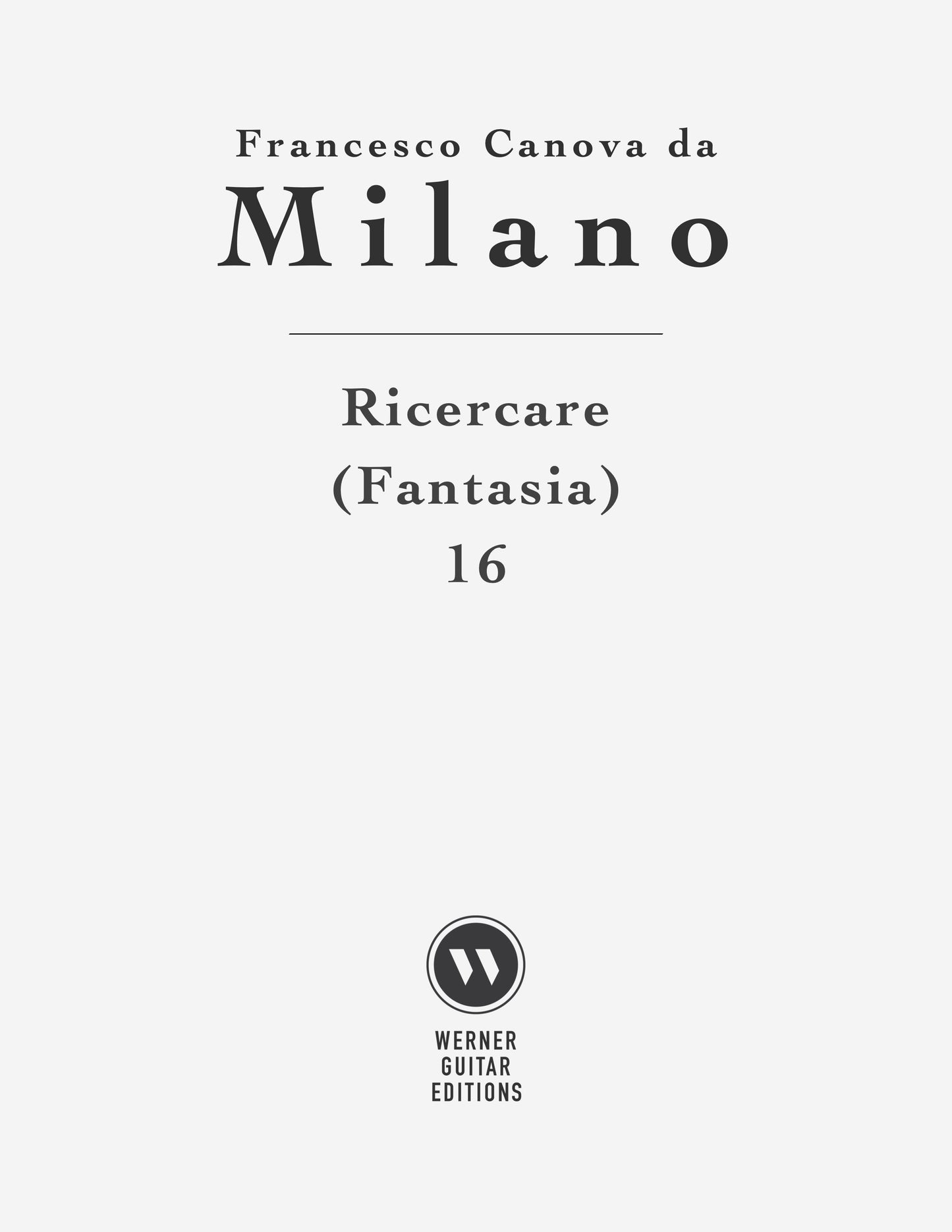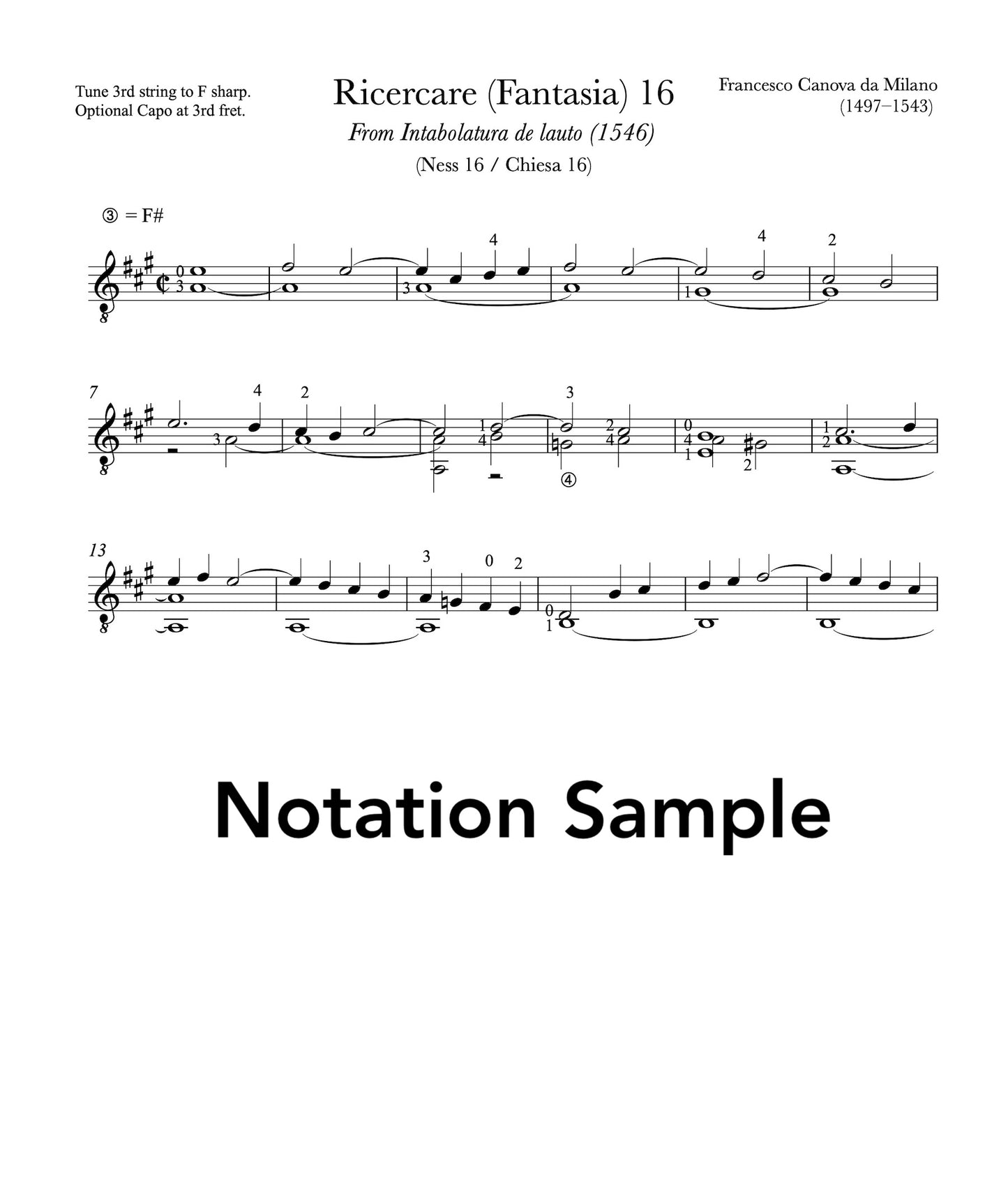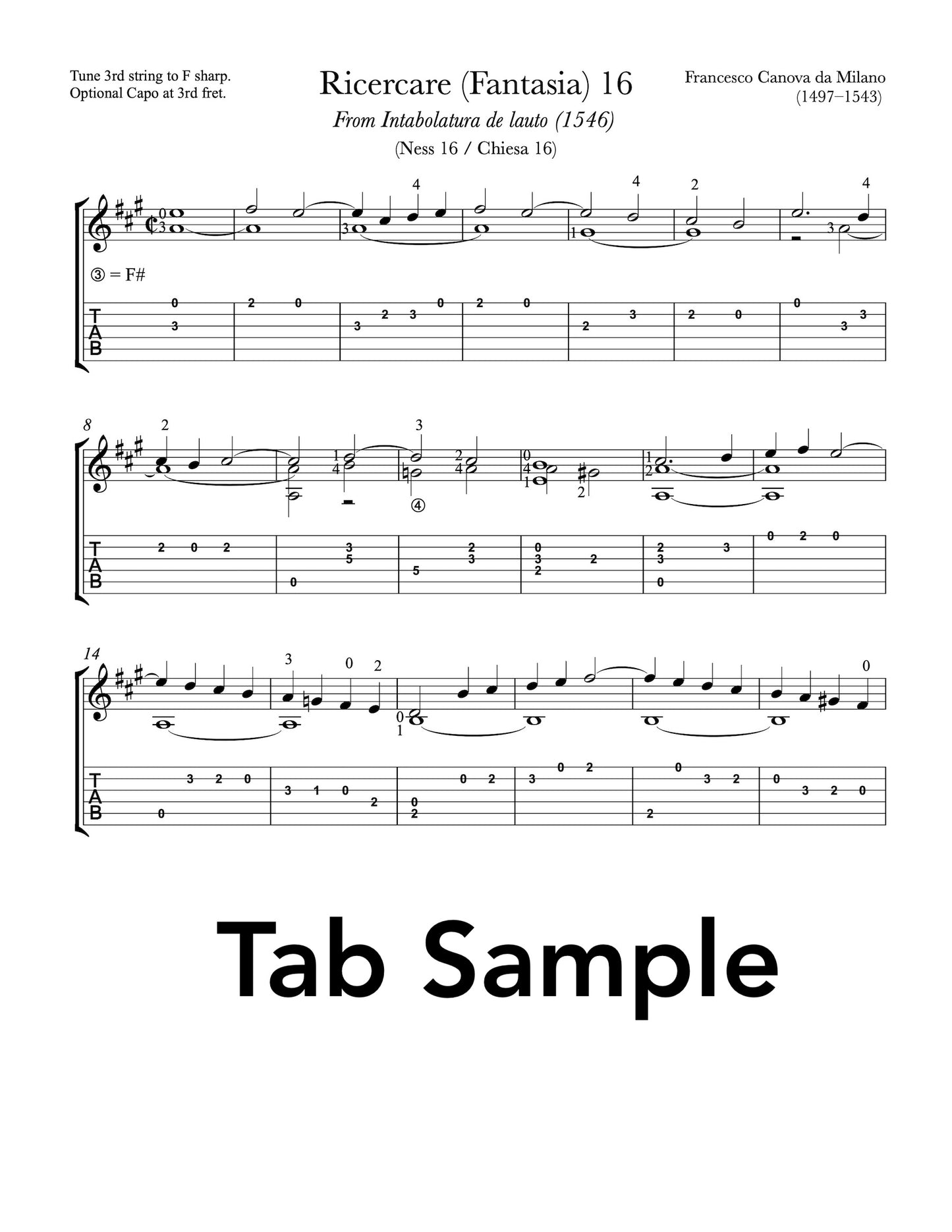Ricercare (Fantasia) 16 by Francesco da Milano (PDF)
Ricercare (Fantasia) 16 by Francesco da Milano (PDF)
Couldn't load pickup availability
Ricercare (Fantasia) 16 by Francesco Canova da Milano (1497–1543) - Ness No.16. PDF sheet music for Classical Guitar. Comes with both a notation edition with left hand fingering and a separate tab edition. PDF Download. Level: Intermediate (Grade 7). Purchase is for the tab edition.
Note: This score uses F# tuning on the 3rd string.
Free Notation Edition
Francesco Canova da Milano (1497–1543) was an Italian lutenist and composer. He was praised throughout Europe as the foremost lute composer of his time. More of his music is preserved than of any other lutenist of the period. A ricercare is an imitative work and, in some ways, a precursor to the Baroque fugue. Numbering: Ness No. 16 (Arthur Ness, The Lute Music of Francesco Canova Da Milano, Harvard University Press, 1970). In my edition the same bar length as the original lute tablature has been used. The choice of rhythmic note duration comes from the Ness tablature. The Ness notation uses a more expansive bar structure but easy reference to the bar numbers of the original lute tablature has been deemed more important. YouTube Performance & Lesson Link.
Why do guitarists use capos and 3rd string F# tuning?
Francesco Canova da Milano (1497–1543) was an Italian lutenist and composer. He was praised throughout Europe as the foremost lute composer of his time. More of his music is preserved than of any other lutenist of the period. Francesco da Milano left a large quantity of lute music, including fantasias, ricercari and transcriptions of vocal compositions by leading composers of the time.
“Francesco Canova da Milano (1497–1543) was one of the greatest of all the Italian lute composers. His contemporaries called him “Il Divino”, as they did Michelangelo, and said he played “with such ravishing skill that little by little, making the strings languish under his fingers in his sublime way, he transported all those listening into a pleasurable melancholy”. His music appeared in more than forty publications throughout the century and in six countries; he was earliest of the many Italian musicians who were to become internationally renowned. He served at the court of four popes, starting with the first Medici pope Leo X (who excommunicated Luther and for whom Michelangelo painted the Sistine Chapel).” – Mark Lindley via Naxos (8.220401).
Share






